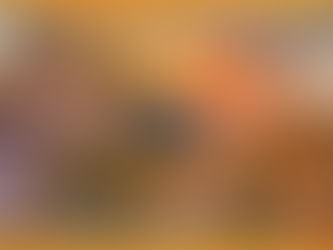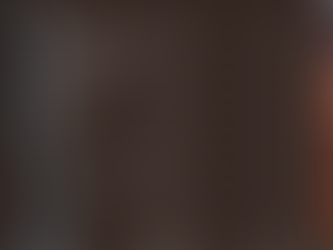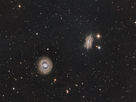M42 - The Great Orion Nebula - Astrophotography Tips & Images
- Antoine & Dalia Grelin

- Oct 31, 2023
- 9 min read
Updated: Jun 12, 2024
Messier 42, also called the Orion Nebula, is the most popular nebula to photograph! And it is one of the easiest objects to capture.
M42 looks amazing in photographs through both telescopes (as seen below) and DSLR lenses (scroll down!).
Object Designation: M42
Also known as: The Orion Nebula
Constellation: Orion
Object Type: Reflection & Emission Nebula
Distance: 1,350 light-years away
Magnitude: 4.0
Discovered in: Pre-historic times
We've imaged the Orion Nebula several times, using different cameras, telescopes, and under different levels of light pollution. We'll show our best results in this post!
The Orion Nebula with a Medium Format Camera
October 2023
In October of 2023, I decided to partner with Dark Matters Astrophotography to work on some images together. Dark Matters Astrophotography uses the best possible gear to capture deep-sky objects under the darkest possible skies.
The first dataset obtained from the telescope is the Orion Nebula, and it is free for everyone to process! This was taken from Animas, New Mexico using a Planewave CDK14 telescope and... a medium format camera!
Be sure to click on the image to open the full-resolution version!
GEAR USED:
Telescope: Planewave CDK14
Mount: Astro-Physics 1100 w/ Absolute Encoders
Camera: Moravian C5A-100M
Filters: Chroma LRGB 50x50mm
ACQUISITION DETAILS:
Total Exposure Time: 12.6 hours
Luminance – 224 x 2 mins – Chroma 50×50 L
Red – 50 x 2 mins – Chroma 50×50 R
Green – 53 x 2 mins – Chroma 50×50 G
Blue – 51 x 2 mins – Chroma 50×50 B
The Orion Nebula from the city with a small refractor
December 2020

We decided to spend 2 nights on M42 from our Bortle 9 backyard using the a small refractor telescope.
Sadly, as you can see in our video, clouds rolled in and in the end, we only gathered about 9.75 hours of data within these two nights. Still, the result is pretty good!
Our only wish is that we picked an exposure time of 10-15 seconds for the core instead of 30 seconds, as even 30 seconds is way too long to not blow out the bright core of M42. Make sure to take note of that!

GEAR USED:
Camera: ZWO ASI071MC
Telescope: Radian Raptor 61
Mount: Atlas EQ-G motorized Mount
Guiding: ZWO ASI290MM Mini
Acquisition: ZWO ASIAir Pro
Processing: Pixinsight with RC-Astro Plugins
ACQUISITION DETAILS:
Total Exposure Time: 9.75 hours
Exposure Time per frame: 5 minutes for the nebulosity / 30 seconds for the core
117 lights for the nebulosity / 15 lights for the core - 15 Darks - 15 Flats
Filter used: Radian Triad Ultra
GAIN: 90
One hour on the Orion Nebula using an unmodified DSLR camera
February 2016
The following photo was taken through our 8” reflector telescope with a total exposure time of only 1 hour! This was taken from a Bortle 4 zone about 45 minutes away from Las Vegas.
M43 (The little ball-shaped nebula on the left of the heart shape of M42) is visible, as well as the Running Man Nebula (top left). When capturing it, be sure to also take a few short exposure shots for the bright core as well as the Trapezium cluster!

GEAR USED:
Camera: Canon t3i
Telescope: 8" Astrograph
Mount: Atlas EQ-G motorized Mount
Processing: Pixinsight
ACQUISITION DETAILS:
Total Exposure Time: 1 hour
Exposure Time per frame: 3 minutes for the nebulosity / 15 seconds for the core
20 lights for the nebulosity / 15 lights for the core - 18 Darks - 111 Bias
ISO: 800
"Nebula" or "Nebulae"?
The Orion nebula is almost always photographed with two other nebulae: M43 (De Mairan's Nebula) & NGC Sh2-279 (The Running Man nebula). See a close-up of both below.

Messier 43 is an H II region that is pretty much part of M42.
Both objects are only separated by a lane of dust.
The image on the left is a tight crop from the main image, rotated 90 degrees to the left.

Sh2-279, or Sharpless 279, or... let's make it easier, the Running Man nebula is located just to the left of M42/M43.
The photo on the right was taken from the main image but rotated 90 degrees to the right where you can see the man running from left to right.
Make sure to frame your camera properly and get all of the Running Man, you do not want a cut nebula in your magnificent image.
Our Online Astrophotography Course
The Galactic Course includes a membership that gives you unlimited access to all our astrophotography courses and processing guides. Step into an ever-growing realm of knowledge and learn at your own pace. Make life-long friends and connections with other members, and get tips from instructors that truly care about your journey and progress under the night sky.
How to find the Orion Nebula in the night sky

M42 is the easiest nebula to find. It is located in Orion’s sword and is obvious to spot as it looks like a star. It lies between other deep-sky objects, such as the Horsehead and Flame nebulae, M78, and even the Witch Head nebula.
Messier 42 is one of the brightest nebulae in the sky and is easily visible with the unaided eye even though it looks just like a regular star. The nebula is an amazing sight through binoculars, as you can make out its shape as well as its bright core.
Any size telescope will reveal more of the gases with different shades of gray. You will also be able to spot the four stars that form the famous Trapezium cluster in the core of the nebula.
Cool Facts
Discovered in 1610
The nearest stellar nursery to Earth
The Trapezium is an open cluster that powers the gases all around
All You Need To Know Before Imaging Messier 42
We made a video where we give you a ton of tips to image M42, watch it below! We also show you several of our attempts at capturing this beautiful object. Our hope is that with this video and this written post, you will be fully ready to photograph the Orion Nebula and will get an amazing result.
Wide-field Astrophotography of the Orion Nebula with a DSLR camera
M42 can easily be photographed without a telescope! We recommend that you aim for the emission nebula Barnard's Loop. You can also get IC 434 and M78 in the same frame if using an 85m or 50mm lens!
Below is Barnard's Loop, we spent 7.2 hours on the imaging (watch Episode 8!), using a 50mm lens, also tracking the stars with our motorized mount.
Click on the image below to visit our full post about Barnard's Loop.
GEAR USED:
Camera: Canon 7D Mark II
Mount: EQ-G motorized Mount
Processing: Pixinsight
ACQUISITION DETAILS:
Total Exposure Time: 7.2 hours
RGB Exposure Time: 3.6 hours
Hydrogen Alpha Exposure Time: 3.6 hours
Exposure Time per frame: 6 minutes
73 lights, calibrated with Darks and Bias
ISO: 800
Wide-field Astrophotography of the Orion Nebula in narrowband
July 2021
In January of 2021, we made a video where we photographed the Orion Nebula with the small Radian Raptor 61 telescope, from our backyard. We used a one-shot color APS-C camera for that shot along with the Triad Ultra filter. The image turned out great for just 9.75 hours of exposure (you can see it if you scroll back up!).
In the comments, you guys told us you would love seeing the same type of image but this time taken with a monochrome camera. Your request has been answered!
On the next clear night, we set up our equipment again but this time took off the Triad Ultra filter and the cropped sensor camera, and instead attached our monochrome camera with the filter wheel.
We spent once again two half-nights imaging this part of the sky, in the hopes to get exactly the same amount of data we got on our last attempt for a great comparison. We ended up getting about 8 hours and 15 minutes in total (VS 9 hours and 45 minutes on the APS-C version), and even with lower integration time, the image looks very good! Make sure to watch the full video HERE!

GEAR USED:
Camera: QHY600M
Telescope: Radian Raptor 61
Mount: Atlas EQ-G motorized Mount
Guiding: ZWO ASI290MM Mini
Acquisition: ZWO ASIAir Pro
Processing: Pixinsight with RC-Astro Plugins
ACQUISITION DETAILS:
Total Exposure Time: 30 hours
Exposure Time per frame: 10 minutes for the nebulosity / 10 seconds for the core
180 lights for the nebulosity / 15 lights for the core - 15 Darks - 15 Flats
Filters used: Chroma 3nm Narrowband
GAIN: 56
As you can see, we had a much wider field of view because the camera used is a full-frame camera and not a cropped sensor like the ASI071MC we used before. We took advantage of that and included the Horsehead Nebula (IC434) in the frame! We are in love with this image!
The color is rarely seen, and might not be to your liking, but we tried an O/H/S combination instead of the usual S/H/O or H/S/O.
Below you can see the difference in framing between a cropped sensor camera and a full-frame camera!

Single Shot & Processing of M42
Processing the Orion Nebula is very easy! The only trick is to know where the nebulosity is supposed to be and to not mess up the background extraction at the beginning!
If you have the chance, take the time to travel to a dark zone to photograph this target (and every other target as well...)
Below you can see the huge difference between a 30-second single shot from our parking lot in Las Vegas, and a single shot from our imaging spot near the desert. If we can, we will try to update this post in the future to show what a single shot from a Bortle 1 zone looks like!

If you are interested in learning how I process all our images, you can find our full processing workflow guide HERE.
Camera lens Astrophotography of M42
As we said above, the Orion Nebula can easily be captured without a telescope. It is a great idea to capture the entire Orion complex with a small lens, but it is also a good target for telephoto lenses, both tracked, and untracked. See our images of M42 using a 300mm lens with and without a tracker below! Both photos have a total exposure time of 3.5 hours.

We got this image using our t3i with a 300mm lens f/5.6 on a simple tripod!
Because of the focal length of the lens, we could only do 6-second exposures before getting star trails.

This image is, obviously, the same nebula, but this time using an iOptron SkyTracker!
Because of the tracking, we were able to do 3-minute exposures instead of 6 seconds!
Notice how the Running Man nebula is much more visible, and how M42's shape is more like a heart than in the untracked photo.
The Very First Picture of the Orion Nebula ever Taken (1880)

Did you ever wonder what the very first astrophotography image was? Well you're about to find out!
On the right is the first picture of the Orion Nebula ever taken, and it also is the very first image of a celestial object! Henry Draper (1837-1882) is considered as being the pioneer of astrophotography. Doctor by day, Draper was a hobbyist astronomer who managed to snap a picture of the heavens for the very first time. You might not recognize the Orion Nebula on the right, but it actually shows the Trapezium cluster in its core.

Henry Draper immediately realized that he could improve this image, and decided to photograph the nebula again several times.
The photo on the left shows M42 taken by Draper in 1882. You now can make out the shape of the nebula much easier!
Sadly, he died at the age of 45 that same year of double pleurisy, and so was unable to continue his astronomical work.
In case you were wondering, Draper used an 11" Clark Brothers photographic refractor telescope.
And below is a quick comparison of the first-ever picture of M42 in 1880, with our own first-ever picture of M42 using a telescope in 2016 😅

The Orion Nebula with a Smart Telescope
We imaged the Orion Nebula with the Stellina observation station from Death Valley, California. We only spent a total of 10 minutes on it but the result is impressive!
It took just a few minutes between the moment we took Stellina out of our trunk and the moment we started imaging with it. You can see our review post and video of this product HERE.

Imaging the Orion Nebula with the QHY533M
February 2022
We imaged Messier 42 in February 2022 with the QHY533M and a small refractor telescope.

This shot was taken from our backyard, using beginner grade 7nm beginner filters. Be sure to read/watch our full review about the QHY533M.
The telescope used, which you can see on the right, is a small 70mm refractor from Meade, now discontinued.
The picture came out really great, especially considering the low exposure time (2.5 hours in total). The camera did a good job at revealing lots of details and colorful gases. The Orion Nebula appears blue and golden here because of the color palette used, the "Hubble Palette" using narrowband filters.
M42 in narrowband using the QHY533M
Want to process your images following our own workflow? Get our guide HERE!
GEAR USED:
Camera: QHY533M
Telescope: Meade 70mm APO
Mount: 10Micron GM1000 HPS
Guiding: ZWO ASI290MM Mini
Acquisition: ZWO ASIAir Pro
Power: Jackery Lithium Battery
Processing: Pixinsight with RC-Astro Plugins
ACQUISITION DETAILS:
Total Exposure Time: 2.5 hours
Exposure Time per frame: 5 minutes
Filters: ZWO Ha/Sii/Oiii
Gain: 76
Some previous attempts at M42
Below are all of our images of Messier 42. See the progression!

Final Thoughts
Messier 42 is by far the best nebula to not only photograph but observe in the night sky. We'd love to see your own versions of the Orion Nebula! Post them below if you have photographed this target before :)
Clear Skies,
Antoine & Dalia Grelin
Galactic Hunter
GALACTIC HUNTER BOOKS


























Thanks for sharing the data. I couldn't resist trying it out in PixInsight and Photoshop.
Here’s an updated image from this summer, here’s the link to my Facebook page where you’ll be able to find my original post www.facebook.com/Lshepastrophotography
Taken 3 March 2023
What a difference a year makes and adding better equipment. I have a post further down in this thread.
SvBony SV503 80ED Refractor Telescope 0.8 Focal Reducer at 448FL ZWO ASI533MC Pro Optolong IR/UV Cut Filter SvBony SV106 200mm Guide Scope ZWO ASI120MC-S Guide Camera ZWO ASIAir Mini ZWO Electronic Auto Focuser (EAF) Celestron Advanced VX Mount
40 Lights @ 120 Seconds 50 Darks @ 120 Seconds 115 Flats 200 Bias
Stacked and Processed in Pixinsight Blur Xterminator and Astro Flat Pro Photoshop 2023
My most recent image of M42 and probably my best image to date, taken with my 10" Quattro CF at F3.62 and the QHY268M. It is also my very first image I have printed on metal.
My most recent attempt at m42 using a 72mm refractor and the asi533 osc. Approx. 50 4 min subs processed in pixinsight and finished in Luminar AI